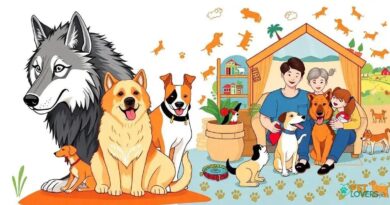O que é Reações
What Are Reactions in Dogs?
Reactions in dogs refer to the various responses exhibited by canines in reaction to stimuli in their environment. These stimuli can be anything from sounds, sights, smells, or even the presence of other animals or humans. Understanding these reactions is crucial for dog owners, as they can indicate a dog’s emotional state, health, and overall well-being.
Types of Reactions
Dogs can exhibit a wide range of reactions, including excitement, fear, aggression, and submission. Each type of reaction serves a purpose, whether it’s to communicate with other dogs, express discomfort, or show affection. For instance, a dog may bark excitedly when it sees its owner, while it may growl or show teeth when feeling threatened.
Understanding Fear Reactions
Fear reactions in dogs can manifest in various ways, such as cowering, hiding, or even aggressive behavior. These reactions are often triggered by loud noises, unfamiliar environments, or past traumatic experiences. Recognizing these fear responses is essential for dog owners to provide the necessary support and training to help their pets feel safe and secure.
Excitement and Playfulness
Excitement reactions are typically seen in dogs during playtime or when they anticipate a fun activity, such as going for a walk. Signs of excitement include wagging tails, jumping, and playful barking. These reactions are positive and indicate a happy and healthy dog, eager to engage with its owner or other dogs.
Aggressive Reactions Explained
Aggressive reactions can be concerning for dog owners and are often a sign of fear, territorial behavior, or protection instincts. Dogs may growl, bark, or lunge at perceived threats. Understanding the triggers for aggressive reactions is vital for preventing potential incidents and ensuring the safety of both the dog and those around it.
Submission and Calming Signals
Submission reactions are a dog’s way of communicating that they do not pose a threat. These reactions can include lowering their body, tucking their tail, or avoiding eye contact. Recognizing these signals can help owners understand their dog’s emotional state and foster a trusting relationship.
Social Reactions with Other Dogs
Social reactions are crucial for dogs as they navigate interactions with other canines. These reactions can include play bows, sniffing, and body language that indicates friendliness or aggression. Observing how dogs react to one another can provide insights into their social skills and comfort levels in various situations.
Health-Related Reactions
Sometimes, a dog’s reactions can indicate underlying health issues. For example, a sudden change in behavior, such as increased aggression or withdrawal, may signal pain or illness. It is essential for dog owners to monitor their pets’ reactions closely and consult a veterinarian if they notice any concerning changes.
Training and Managing Reactions
Training plays a significant role in managing a dog’s reactions. Positive reinforcement techniques can help modify undesirable behaviors and encourage appropriate reactions to various stimuli. Consistent training helps dogs learn how to respond to different situations, making them more adaptable and well-behaved companions.



